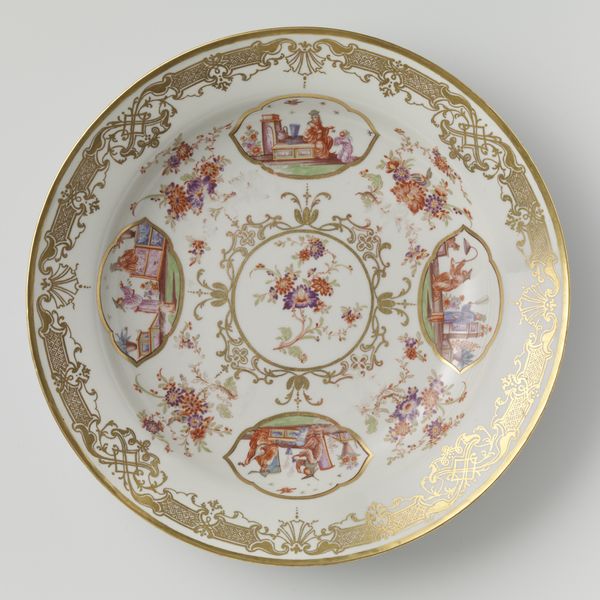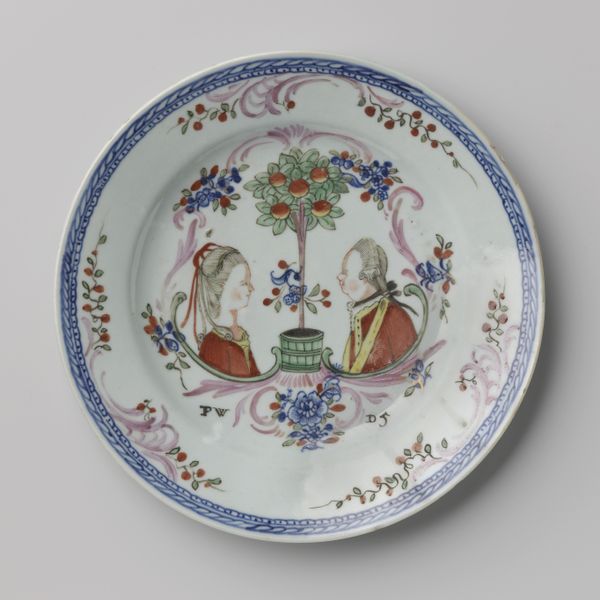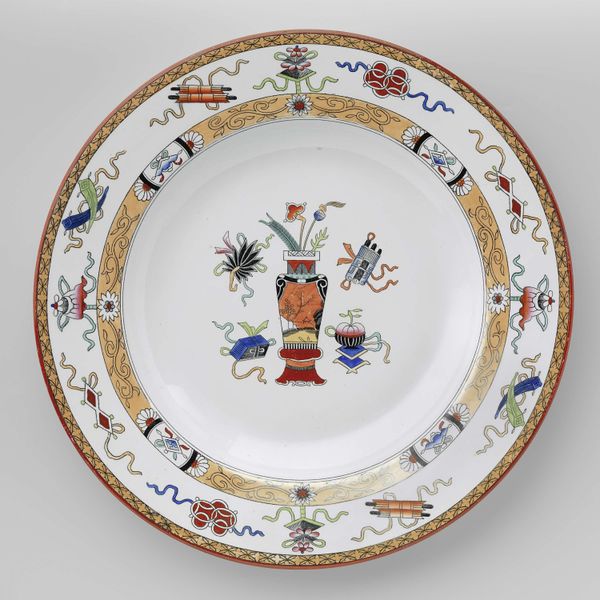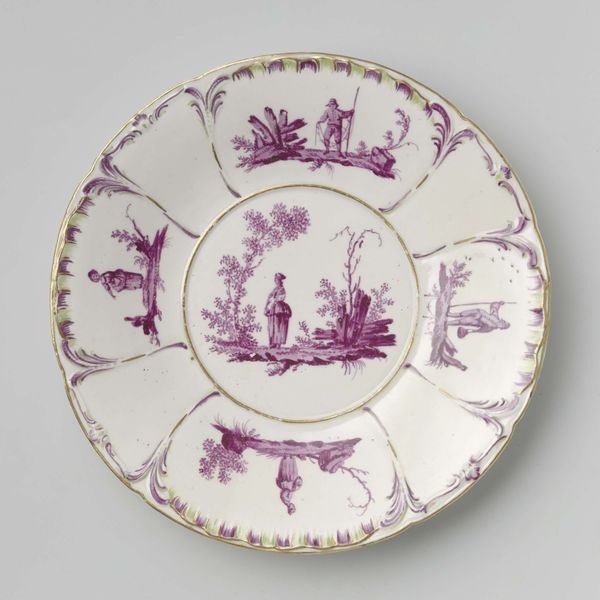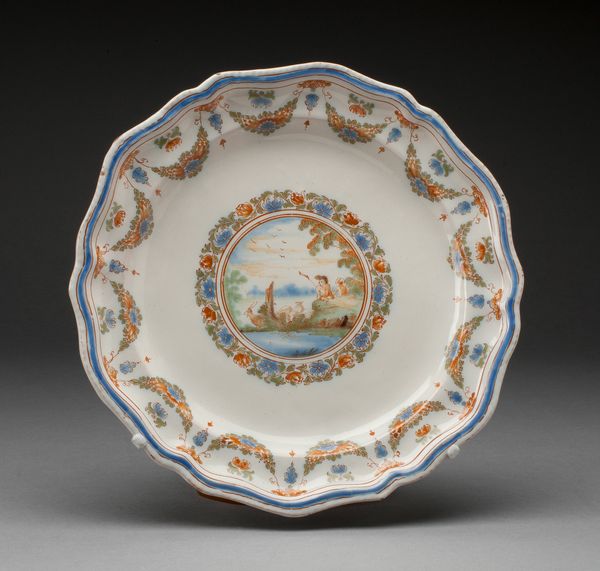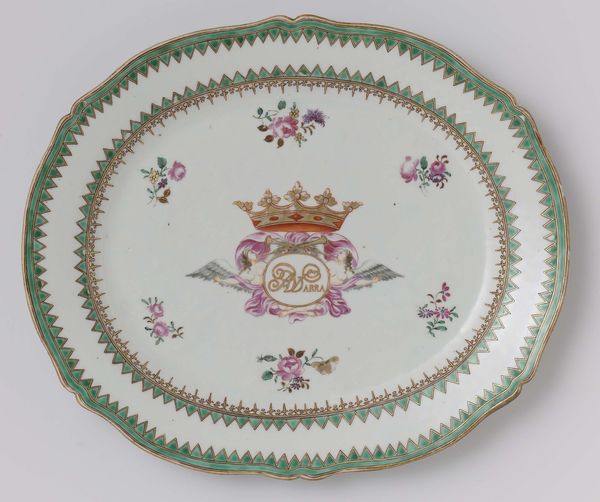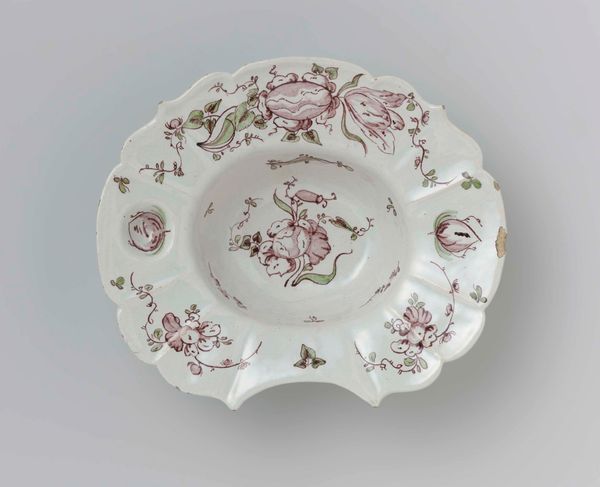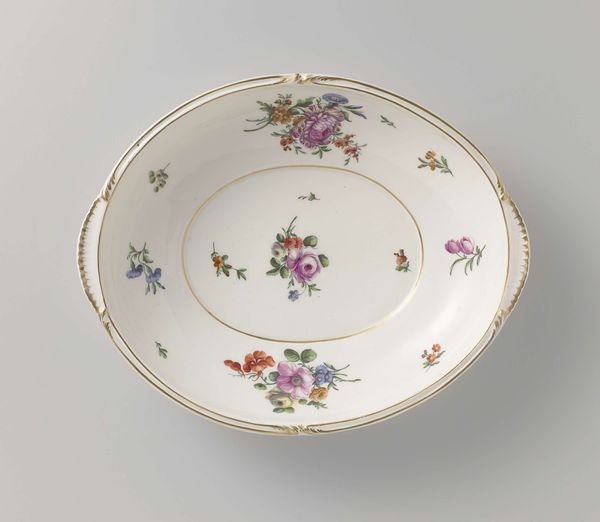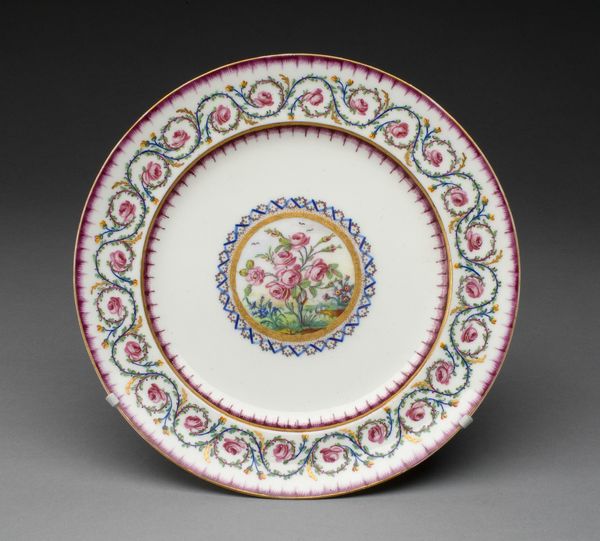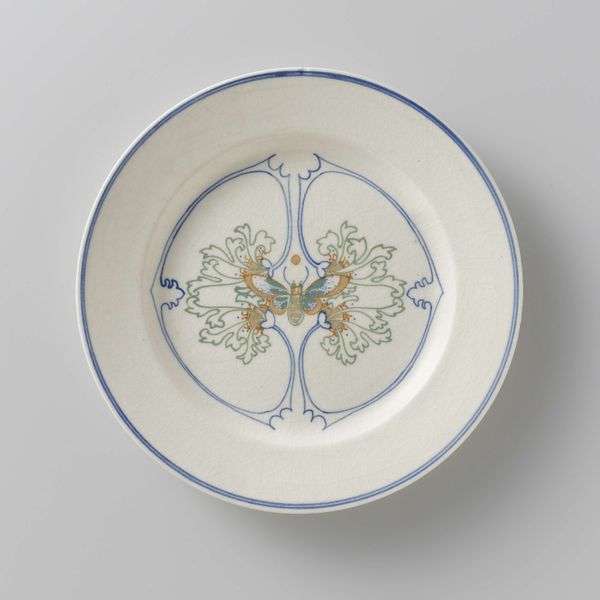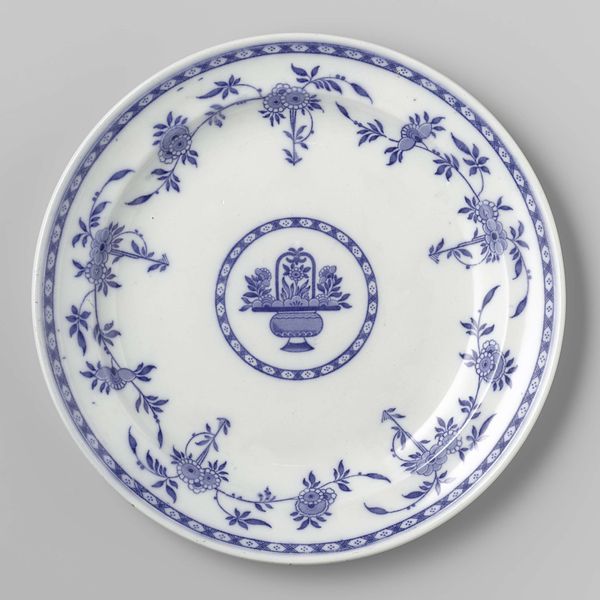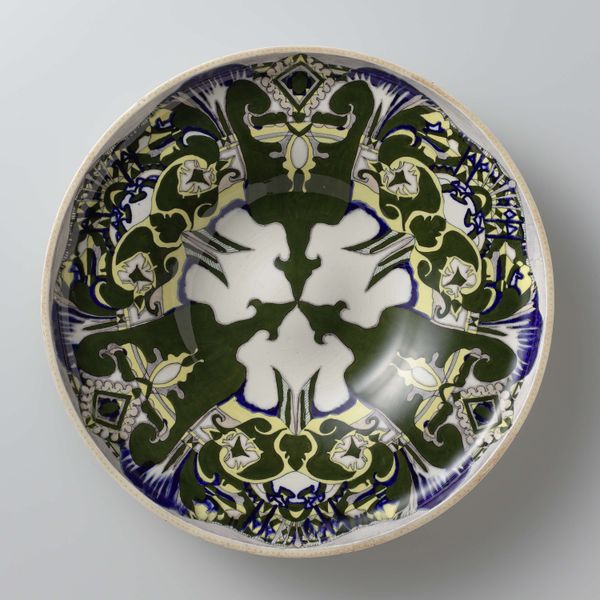
ceramic, earthenware
#
pottery
#
dutch-golden-age
#
ceramic
#
earthenware
#
stoneware
#
ceramic
Copyright: Rijks Museum: Open Domain
Curator: Here we have an earthenware plate, believed to have been created sometime between 1700 and 1725. It’s known as the "Plate with the arms of Jan van Beuningen," though its creator is, alas, anonymous. Editor: My first impression? It's strikingly decorative, a statement piece meant to showcase status. The vivid oranges and blues against the cream background immediately catch the eye. It speaks of luxury and perhaps, a certain self-importance. Curator: Absolutely. This plate wasn't simply functional; it communicated a specific narrative about identity and power. The central coat of arms would have been instantly recognizable within Jan van Beuningen's social circle, broadcasting his lineage and accomplishments. What is the symbolism of the chicken? Was this about his literal wealth – could this chicken be symbolic of trade in livestock – or was there something more symbolic? Editor: Interesting point. Looking at the materials – the humble earthenware elevated through detailed painting – also suggests a complex relationship between craft, artistry, and social climbing. It makes one wonder about the process; about the maker, whose skilled labor made it possible to create an item designed for celebratory display. Curator: Precisely. Dutch Golden Age society was incredibly structured, and objects like these helped to reinforce that structure. The plate performs ideas of patronage, wealth, social performance, and hierarchy during that era. Editor: And yet, there’s a folk quality, too. A tension that comes across in the use of simple, readily available clay as a medium for conveying such a self-consciously 'high class' message. Who did it actually employ in order to display and present wealth to all who were able to view it? Curator: The border designs and their nautical themes tell stories of trade, exploration, maybe even the less savory aspects of colonialism, upon which much of that wealth was built. Editor: It’s a reminder that even everyday objects can hold complex, often contradictory narratives. They reflect the time and specific values held in its moment of making. Curator: Indeed, seeing this plate prompts us to critically consider what symbols of identity and status persist even now. Editor: And how objects around us are often imbued with a labor that's hidden in plain sight. It’s an artwork to really digest!
Comments
No comments
Be the first to comment and join the conversation on the ultimate creative platform.
